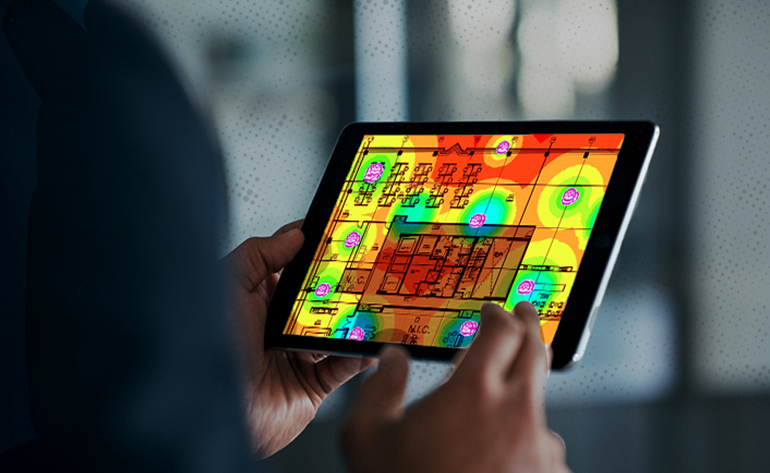Wireless Survey

Wireless Survey
Our services encompass conducting comprehensive wireless surveys tailored to the specific needs of organizations.
A wireless survey is an essential step in planning and deploying a reliable and efficient wireless network. By conducting a wireless survey, organizations can ensure optimal coverage, minimize interference, and provide a seamless wireless experience for users within the surveyed area.
A wireless survey, also known as a site survey or wireless site survey, is a process of assessing and analyzing the wireless signal coverage and performance within a specific area. It involves evaluating the existing wireless network infrastructure, identifying potential sources of interference, and determining optimal access point placement for reliable and efficient wireless connectivity.
Here is an overview of a wireless survey:
Pre-Survey Planning
The process begins with planning and defining the objectives of the wireless survey.
Factors such as the size and layout of the area, the number of users, and the desired level of coverage and performance are taken into account.
Physical Assessment
A physical assessment of the area is conducted to identify potential obstacles or sources of interference that can affect wireless signal propagation.
This includes analyzing the building structure, walls, partitions, and the presence of other electronic devices.
Signal Measurement
Wireless survey tools are used to measure the signal strength, signal-to-noise ratio, and channel interference at various locations within the surveyed area.
These measurements help identify areas with weak signal coverage, areas prone to interference, and areas with potential signal overlap.
Access Point Placement
Based on the signal measurements, optimal access point (AP) placement is determined to ensure uniform and reliable coverage throughout the area.
Factors such as AP density, antenna type, power settings, and channel allocation are considered to minimize signal overlap and interference.
Interference Analysis
Interference sources, such as neighboring wireless networks, microwave ovens, or other electronic devices, are identified and analyzed.
Steps are taken to mitigate or minimize the impact of interference on the wireless network performance.
Coverage Heatmaps
Visual representations, known as coverage heatmaps, are generated to illustrate the signal coverage and strength across the surveyed area.
These heatmaps help identify areas with weak coverage or dead zones, enabling adjustments to optimize the network's performance.
Report and Recommendations
A comprehensive report is generated, documenting the findings of the wireless survey and providing recommendations for improving the wireless network.
The report may include details on access point placement, channel allocation, power settings, security considerations, and any necessary infrastructure upgrades.
Scalability and Coverage
Wireless network solutions are designed to be scalable, allowing for the addition of access points and expansion of coverage areas as needed. Coverage planning considers factors such as signal strength, interference, and building layout to ensure consistent coverage throughout the desired area.
Seamless Roaming and Handoff
Advanced wireless network solutions enable seamless roaming, allowing devices to maintain a stable connection while moving between access points. This ensures uninterrupted connectivity and a smooth transition between coverage zones.
